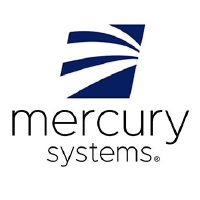
We could not find any results for:
Make sure your spelling is correct or try broadening your search.

Mercury Systems Inc is a commercial technology company serving the aerospace and defense industry. The company envisions, creates and delivers secure open architecture solutions powering a broad range of mission-critical applications in the most challenging and demanding environments. Inspired by it... Mercury Systems Inc is a commercial technology company serving the aerospace and defense industry. The company envisions, creates and delivers secure open architecture solutions powering a broad range of mission-critical applications in the most challenging and demanding environments. Inspired by its purpose of delivering Innovation that Matters, By and For People Who Matter, Mercury helps make the world a safer, more secure place for all. Show more
Q2 FY25 Bookings of $242.4 million; book-to-bill ratio of 1.09Record backlog of $1.4 billion; up 6% year-over-yearQ2 FY25 Revenue of $223.1 million; GAAP net loss of $17.6 million; and adjusted...
ANDOVER, Mass., Jan. 21, 2025 (GLOBE NEWSWIRE) -- Mercury Systems, Inc. (NASDAQ: MRCY, www.mrcy.com), a technology company that delivers mission-critical processing power to the edge, today...
ANDOVER, Mass., Jan. 14, 2025 (GLOBE NEWSWIRE) -- Mercury Systems, Inc. (NASDAQ: MRCY, www.mrcy.com), a technology company that delivers mission-critical processing power to the edge, today...
ANDOVER, Mass., Jan. 14, 2025 (GLOBE NEWSWIRE) -- Mercury Systems Inc. (NASDAQ: MRCY, www.mrcy.com), a technology company that delivers mission-critical processing power to the edge, will...
Roger Krone, former Chairman and CEO of Leidos, departs Board to focus on Boy Scouts of America Jean Bua, CFO of NetScout Systems, appointed to Board ANDOVER, Mass., Jan. 06, 2025 (GLOBE...
| Period | Change | Change % | Open | High | Low | Avg. Daily Vol | VWAP | |
|---|---|---|---|---|---|---|---|---|
| 1 | 7.47 | 18.6936936937 | 39.96 | 52.25 | 39.96 | 1045915 | 47.01080651 | CS |
| 4 | 4.52 | 10.533675134 | 42.91 | 52.25 | 39.42 | 560604 | 44.8953737 | CS |
| 12 | 4.62 | 10.7918710582 | 42.81 | 52.25 | 37.28 | 507333 | 41.72017648 | CS |
| 26 | 14.33 | 43.2930513595 | 33.1 | 52.25 | 32.32 | 544624 | 39.26385418 | CS |
| 52 | 17.3 | 57.4178559575 | 30.13 | 52.25 | 25.31 | 578544 | 34.0590396 | CS |
| 156 | -5.05 | -9.62271341463 | 52.48 | 72.28 | 25.31 | 509501 | 41.35812043 | CS |
| 260 | -33.8 | -41.6102425212 | 81.23 | 96.29 | 25.31 | 491604 | 50.77397066 | CS |
 Carolyn
24 years ago
Carolyn
24 years ago
 Carolyn
24 years ago
Carolyn
24 years ago
 Carolyn
24 years ago
Carolyn
24 years ago
 mutorcs
24 years ago
mutorcs
24 years ago
 Carolyn
24 years ago
Carolyn
24 years ago
 Carolyn
24 years ago
Carolyn
24 years ago
 Carolyn
24 years ago
Carolyn
24 years ago
 Carolyn
24 years ago
Carolyn
24 years ago
 mutorcs
24 years ago
mutorcs
24 years ago
 Carolyn
24 years ago
Carolyn
24 years ago
 Carolyn
24 years ago
Carolyn
24 years ago
 Carolyn
24 years ago
Carolyn
24 years ago

It looks like you are not logged in. Click the button below to log in and keep track of your recent history.
Support: 1-888-992-3836 | support@advfn.com
By accessing the services available at ADVFN you are agreeing to be bound by ADVFN's Terms & Conditions